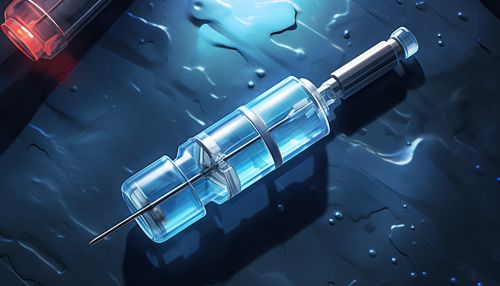Vasopressor
Introduction
Vasopressors are a group of pharmaceutical drugs that induce vasoconstriction, or the narrowing of blood vessels, to increase systemic vascular resistance and raise blood pressure. They are primarily used in the management of hypotension, particularly in critical care settings.


Mechanism of Action
Vasopressors exert their effects by binding to and activating certain adrenergic receptors on the smooth muscle cells lining the blood vessels. This leads to the contraction of these muscle cells, causing the blood vessels to narrow and subsequently increasing blood pressure. The specific receptors targeted by vasopressors include alpha-1, alpha-2, beta-1, and beta-2 adrenergic receptors.
Types of Vasopressors
There are several types of vasopressors, each with its unique receptor affinity profile and clinical uses. These include:
- Norepinephrine: This is a potent alpha-1 receptor agonist, making it a powerful vasoconstrictor. It is the first-line vasopressor for septic shock and is also used in cardiogenic shock.
- Epinephrine: This drug has both alpha and beta receptor activity. It is used in anaphylactic shock and cardiac arrest.
- Dopamine: This vasopressor has dose-dependent receptor activity. At low doses, it primarily acts on dopamine receptors, while at higher doses, it also affects alpha and beta receptors. It is used in cases of shock and heart failure.
- Vasopressin: This is a non-adrenergic vasopressor that acts on V1 receptors to cause vasoconstriction. It is used in vasodilatory shock when patients are not responding to other vasopressors.
Clinical Use
Vasopressors are primarily used in critical care medicine to treat severe hypotension and shock. They are often used in conjunction with other treatments such as fluid resuscitation and inotropic drugs. The choice of vasopressor depends on the underlying cause of the hypotension, the patient's hemodynamic status, and the specific receptor activity of the drug.
Side Effects and Contraindications
While vasopressors are essential in managing life-threatening hypotension, they are not without risks. Side effects can include arrhythmias, ischemia, and tissue necrosis due to excessive vasoconstriction. Contraindications include hypersensitivity to the drug and certain cardiovascular conditions.
Future Research
Research into vasopressors continues to evolve, with ongoing studies investigating new drugs, different dosing strategies, and the role of vasopressors in various clinical scenarios. This research is crucial in improving patient outcomes in critical care settings.
